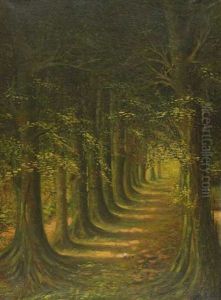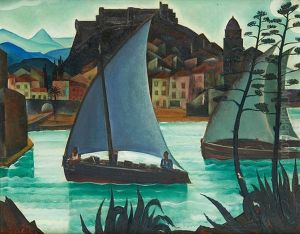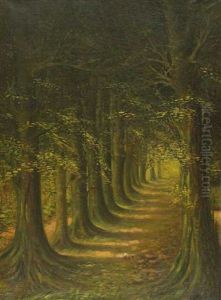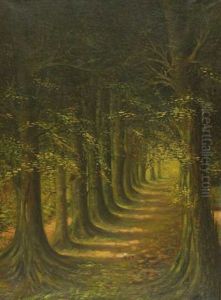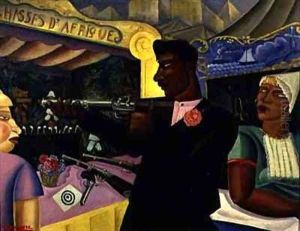Albert Droesbeke Paintings
Albert Droesbeke was a Belgian artist born in 1896 in Ixelles, a municipality in Brussels. He is known for his work as a painter, graphic artist, and book illustrator. Droesbeke's artistic journey began at a young age, showing promise in the visual arts. He received his formal education at the Académie Royale des Beaux-Arts in Brussels, where he was trained in the fine arts, particularly in painting and drawing.
During his career, Albert Droesbeke developed a distinctive style that was influenced by the prevailing art movements of his time, such as Art Nouveau and later Art Deco. He was also impacted by the works of the Symbolists, which is evident in his mystical and often dreamlike imagery. His works often contained elements of fantasy, with an ethereal quality that captured the imagination of his audience.
Despite his early promise and unique artistic vision, Albert Droesbeke's career was cut short by his untimely death in 1929 at the age of 33. His death meant that his body of work was relatively limited, but the pieces he created during his short life continued to captivate art enthusiasts and collectors. Droesbeke's illustrations and graphic works, in particular, have been praised for their intricate detail and imaginative composition.
Although Albert Droesbeke is not as widely known as some of his contemporaries, his work has been recognized posthumously, and he is considered an important figure in the Belgian art scene of the early 20th century. His legacy is preserved in the collections of various museums and in the memories of those who appreciate early 20th-century European art.
Today, scholars and art historians continue to study Droesbeke's work to gain a deeper understanding of the cultural and artistic landscape of Belgium during his lifetime. His contributions to the world of art, although limited by his short life, remain a testament to his talent and artistic vision.




